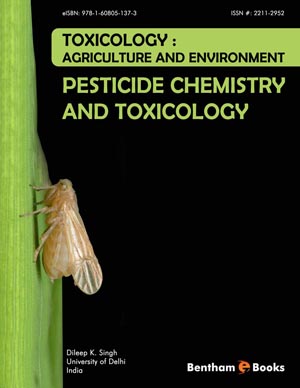Abstract
In this chapter different pesticide formulations and its method of application has been described. Pesticides are utilized in the form of formulations. Formulation is final physical condition in which the insecticide is sold commercially. Formulation is the processing of a pesticide by such methods that will improve its properties of storage, handling, application, effectiveness and safety to the applicator and the environment, and profitability. Many formulations are made like emulsifible concentrate, water-miscible liquid, wettable powder, water soluble powders, oil solutions, flowable powders, aerosols, granular, fumigants, ultra low volume concentrates, fogging concentrates, dusts, impregnated materials, poison baits, slow release insecticides etc. A technical grade of pesticide is the pure form (purity up to 95-98 per cent) of the chemical.
Pesticides are applied in the field with the help of suitable equipment. A variety of sprayers are available in the market. Granule applicators as well as dusters are used for soil treatment. Ultra low volume application became possible through the development of equipments that allow application of very narrow range of droplet sizes. The application patterns, day timing and temperature are important considerations while applying the pesticides. The type and level of pest infestation decide type of the pesticides to be use as well as the pesticide application method.






















